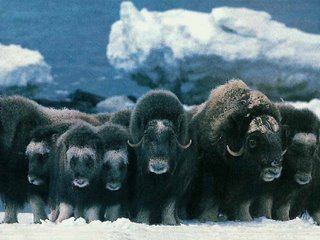
BMC Evol Biol. 2006 Sep 22;6(1):73 [Epub ahead of print]
Origin of mitochondrial DNA diversity of domestic yaks.
Guo S et al.
ABSTRACT: BACKGROUND: The domestication of plants and animals was extremely important anthropologically. Previous studies have revealed a general tendency for populations of livestock species to include deeply divergent maternal lineages, indicating that they were domesticated in multiple, independent events from genetically discrete wild populations. However, in water buffalo, there are suggestions that a similar deep maternal bifurcation may have originated from a single population. These hypotheses have rarely been rigorously tested because of a lack of sufficient wild samples. To investigate the origin of the domestic yak (Poephagus grunnies), we analyzed 637 bp of maternal inherited mtDNA from 13 wild yaks (including eight wild yaks from a small population in west Qinghai) and 250 domesticated yaks from major herding regions. RESULTS: The domestic yak populations had two deeply divergent phylogenetic groups with a divergence time of > 100,000 yrs BP. We here show that haplotypes clustering with two deeply divergent maternal lineages in domesticated yaks occur in a single, small, wild population. This finding suggests that all domestic yaks are derived from a single wild gene pool. However, there is no clear correlation of the mtDNA phylogenetic clades and the 10 morphological types of sampled yaks indicating that the latter diversified recently. Relatively high diversity was found in Qinghai and Tibet around the current wild distribution, in accordance with previous suggestions that the earliest domestications occurred in this region. Conventional molecular clock estimation led to an unrealistic early dating of the start of the domestication. However, Bayesian estimation of the coalescence time allowing a relaxation of the mutation rate are better in agreement with a domestication during the Holocene as supported by archeological records. CONCLUSION: The information gathered here and the previous studies of other animals show that the demographic histories of domestication of livestock species were highly diverse despite the common general feature of deeply divergent maternal lineages. The results further suggest that domestication of local wild prey ungulate animals was a common occurrence during the development of human civilization following the postglacial colonization in different locations of the world, including the high, arid Qinghai-Tibetan Plateau.
Link

No comments:
Post a Comment